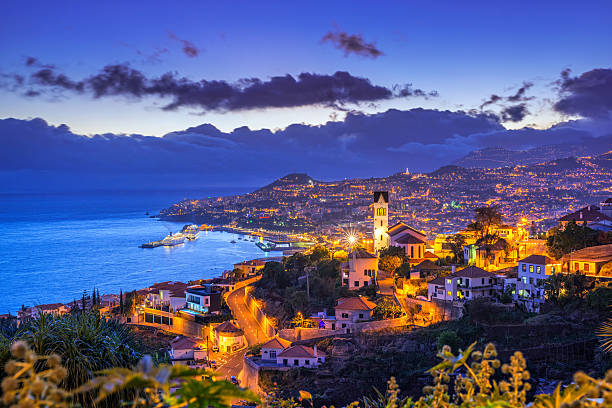Europe is a large, diverse continent with an endless array of things to see and do, from picturesque Paris to smoke-filled coffeeshops in Amsterdam, Oktoberfest to La Tomatina. Whether you’re touring Europe for a few months on the cheap or just taking a well-deserved holiday, you’ll have no trouble occupying your time. Beautiful beaches, historical buildings, amazing wine, and a plethora of world-class festivals can all be found on the continent. Every country is also vastly distinct from the next, providing an endless range of activities to partake in while your journey. In 2006, I went backpacking in Europe for the first time and was instantly fascinated. Since then, I’ve visited every year, led tours across the continent, and even written a book about European travel.
Amsterdam

I adore Amsterdam so much that I spent a brief period of time there in 2006. People ride their bikes to and fro on cobblestone and brick streets that snake around gorgeous canals. Amsterdam features a thriving art and music scene, as well as numerous museums, including the Anne Frank House, FOAM, the history museum, and the hemp museum. Make your way out of the city centre to Jordaan and Oost, where you’ll find lovely outdoor cafes and fewer tourists.
Barcelona

Barcelona is a city that operates around the clock, seven days a week. It has the potential to challenge New York City for the title of “city that never sleeps.” Expect late-night dinners and celebrations that last till daybreak. There is a magnificent beach, heaps of Gaudi architecture (including the famed Sagrada Familia, which has been under construction for over 100 years! ), incredible cuisine tours, one of the top history museums in the country, and plenty of outdoor areas, in addition to a terrific food and nightlife scene.
Berlin

Stylish and fashionable Berlin is a buzzing metropolis. It has a thriving music and cultural scene, as well as a rising culinary movement, and is one of Europe’s most affordable capital cities. Make a point of studying about the city’s darker history. the several great museums, memorials, and historical sites The East Side Gallery, a mural-covered stretch of the Berlin Wall, and the Memorial to Europe’s Murdered Jews are two particularly devastating reminders of Germany’s past. The Deutsches Historisches Museum (German Historical Museum) is one of the best history museums in the world, covering all periods of German history. Relax in Berlin’s many green spaces, from Tempelhof Field, a former airfield and popular local hangout location, to Tiergarten, a tree-covered former hunting ground for 17th-century aristocracy, once you’ve had your fill of history.
Oktoberfest

Oktoberfest is a must-see for anybody visiting Germany in September. Millions of people from all over the world descend on the city for two weeks of beer, excitement, music, and wild fun. Thousands of people singing in unison, raising pint glasses for countless toasts, and generally enjoying the party atmosphere makes you feel good about the world. (Or might it just be the beer?) Just make sure you book your accommodations ahead of time and expect to spend top dollar.
London

In London’s many neighbourhoods, get a sense of English culture. The Tate, the British Museum, the City Museum, the National Gallery, and the Historical Museum are among the best in the world (and most are free). With Big Ben, the House of Parliament, the London Eye, the Tower of London, Tower Bridge, and, of course, Buckingham Palace, there’s no shortage of iconic landmarks. The city also has excellent food and a vibrant pub culture, which is ideal for unwinding after a long day of sightseeing. On weekends, visit Brick Lane for some fantastic food and craft fairs. Although I prefer Paris to London, London has a refined and entertaining atmosphere. Just keep an eye on those drinks – London isn’t cheap.
Scandinavia

Scandinavia is my favourite European region. The quality of living is excellent, the people are attractive and kind, and the cities are well-kept and historically significant. Cycling around the towns, taking canal tours, hiking through large forested areas, archipelago hopping, fika (a Swedish coffee break), and warming up in saunas are just a few of the popular activities available. True, this part of Europe isn’t inexpensive, but there are numerous methods to cut costs. Don’t be put off by the hefty pricing. Copenhagen, Stockholm, Gotland, Norway’s fjords, and Lapland in Finland are all highlights for me.
Romania

Romania is a little-known Eastern European country with hidden but magnificent mediaeval towns like Brasov (home of “Dracula’s castle”), Sighisoara, and Sibiu, as well as gorgeous Black Sea beaches and fantastic trekking in the Fagaras Mountains – all at dirt-cheap costs. Other notable attractions include frescoed Byzantine monasteries, Transylvania’s steepled wooden churches, the hip university town of Cluj-Napoca, Bucharest, Romania’s post-communist capital, and the Danube Delta, a vast nature reserve.
Iceland

Iceland is a wonderful nation with magnificent waterfalls, hidden hot springs around every corner, and sweeping panoramas unlike any other. The country immediately became one of my favorites after my first visit. There’s no bad season to visit with whale viewing in the summer, northern lights in the winter, and geothermal pools to relax in all year! While the magnificent natural vistas of Iceland are the main lure, Reykjavik, with its café culture, creative vibe, and vividly coloured wooden row houses, is worth a few of days.
Loire Valley

The scenic Loire Valley, located in central France, is a UNESCO World Heritage site that runs 280 kilometres (174 miles) along the Loire River. With over 1,000 vineyards available to the public, the area is one of France’s major wine-growing regions, producing some of the best wine in the world. Even people who do not drink wine can appreciate the region’s charming tiny villages, delicious cuisine, and over 300 outstanding chateaux. It’s an area that shouldn’t be overlooked.
Portugal

Fado is a musical tradition in Portugal that dates back over 200 years and originated in Lisbon. Fado is a haunting, poetic, and passionate melody that is possibly derived from the Latin word for fate. The majority of the songs deal with loss and grief, and the music was popular among the working class (especially sailors). Normally, dinnertime performances take place in restaurants. Clube de Fado, Tasca do Chico, Parreirinha de Alfama, and Senhor Vinho are all worth seeing in Lisbon.



